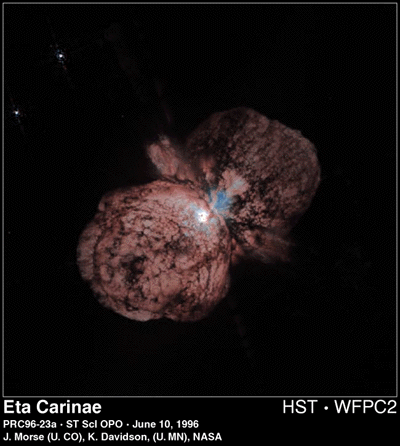- Mostly scattered in the atmosphere.
- Radioactive, and so dangerous to humans, but the atmosphere protects us.
Cosmic rays are more dangerous for airplane pilots and astronauts, who work
above the atmosphere. Because cosmic rays are radioactive and can cause mutations,
some people believe that they ould be part of the origin of life on earth!
If a cosmic ray hit the pimordial ooze and started a protein forming or something...
- Discovered in 1912 by Victor Hess (below,) when he found that an electroscope
(which is made up of two thin strips of charged foil, which detects charge)
discharged more rapidly as he ascended in a balloon. He attributed this to
a source of radiation entering the atmosphere from above, and in 1936 was
awarded the Nobel prize for his discovery.

- Most cosmic rays have energies of 10^16 eV and below. (An eV
is just a unit that particle physicts use to measure energies, like a Joule.
10^16 eV=1.6 Joules.) These are believed to originate in supernovae (like
Eta Carinae, below.) The cosmic rays are accelerated as the shock waves from
these exploding stars travel through the surrounding interstellar gas.

- Ultra-high energy cosmic rays (UHEs): Cosmic
rays with energies above 10^19 eV. (About the same energy as a
well-hit tennis ball.) Origin unknown!!!
Need even more info? Check out a great Scientific
American article.
Introduction : What
is a cosmic ray? : Where do UHE cosmic rays come
from? : How
can we detect UHEs? : The ALTA-BC module demonstration
: Contact us to get a presentation at your school!
: Back to
the Phys 420 demo page


